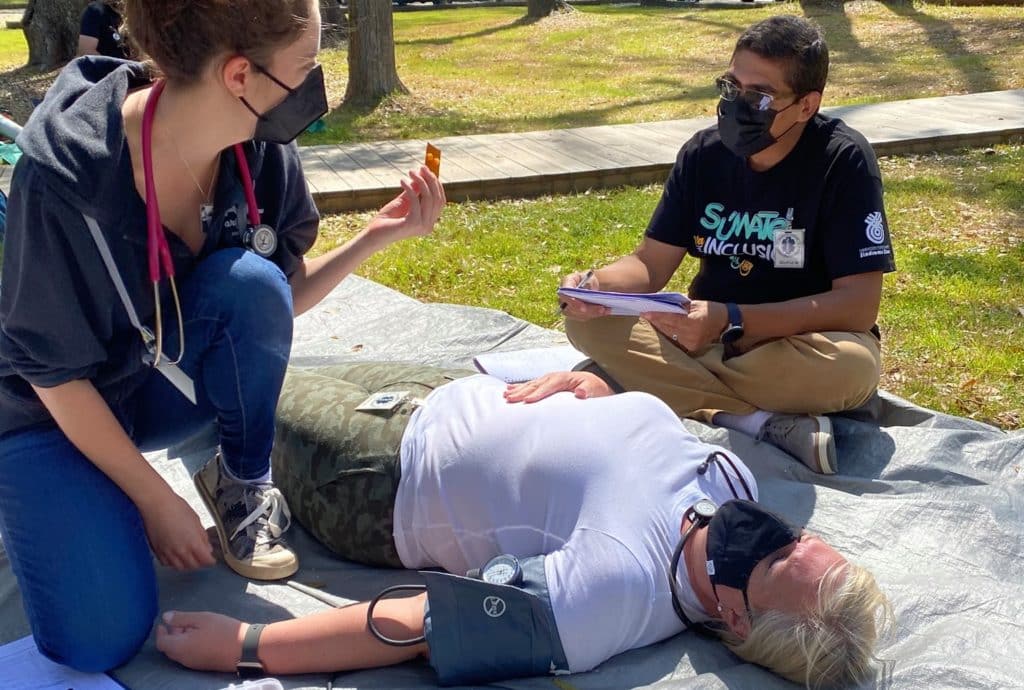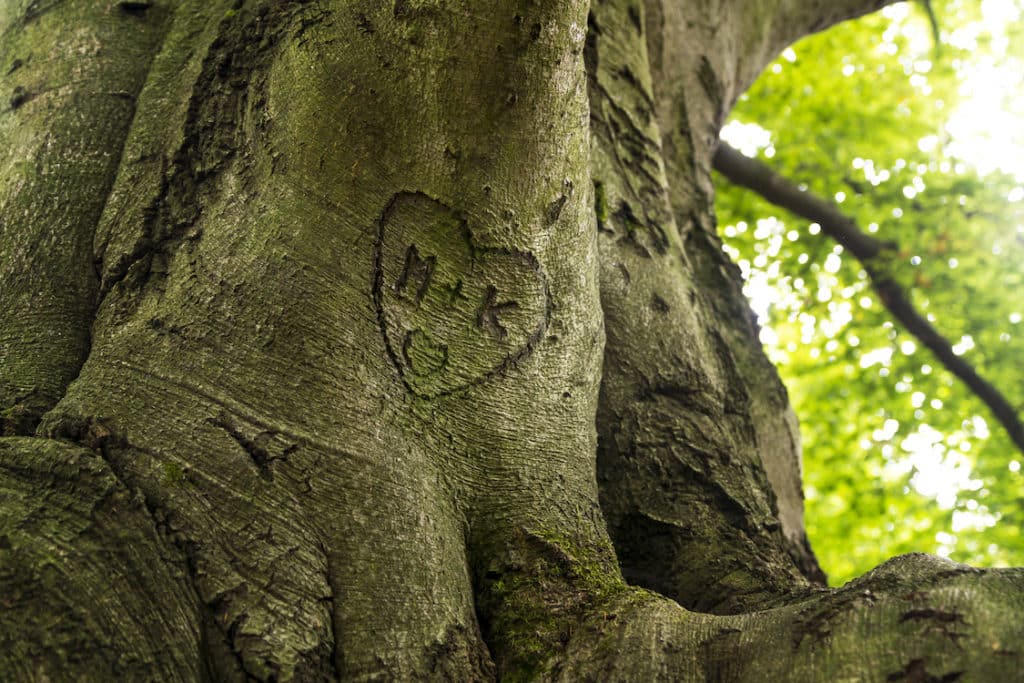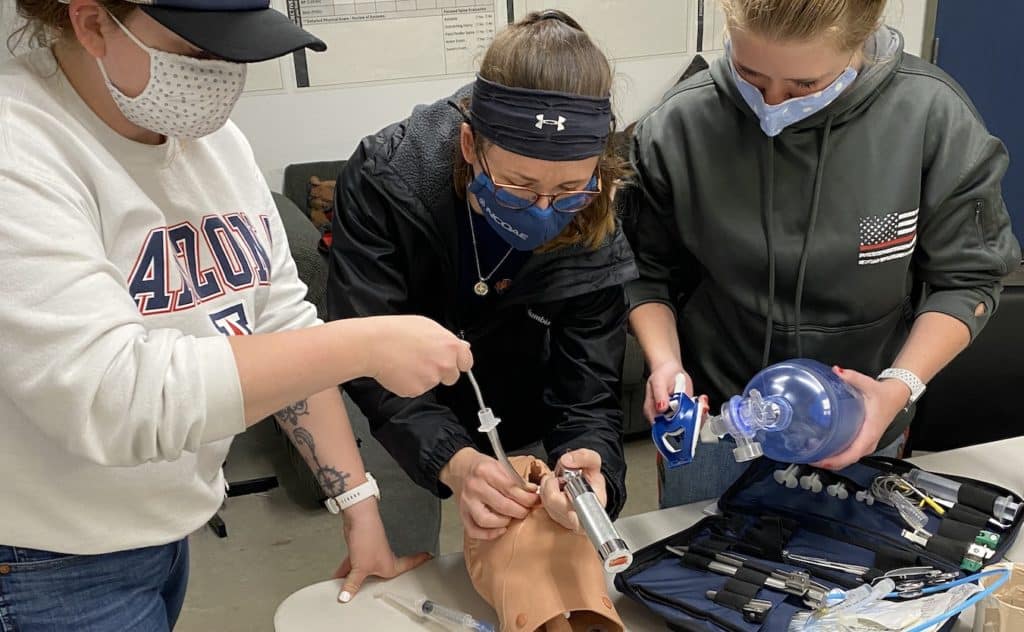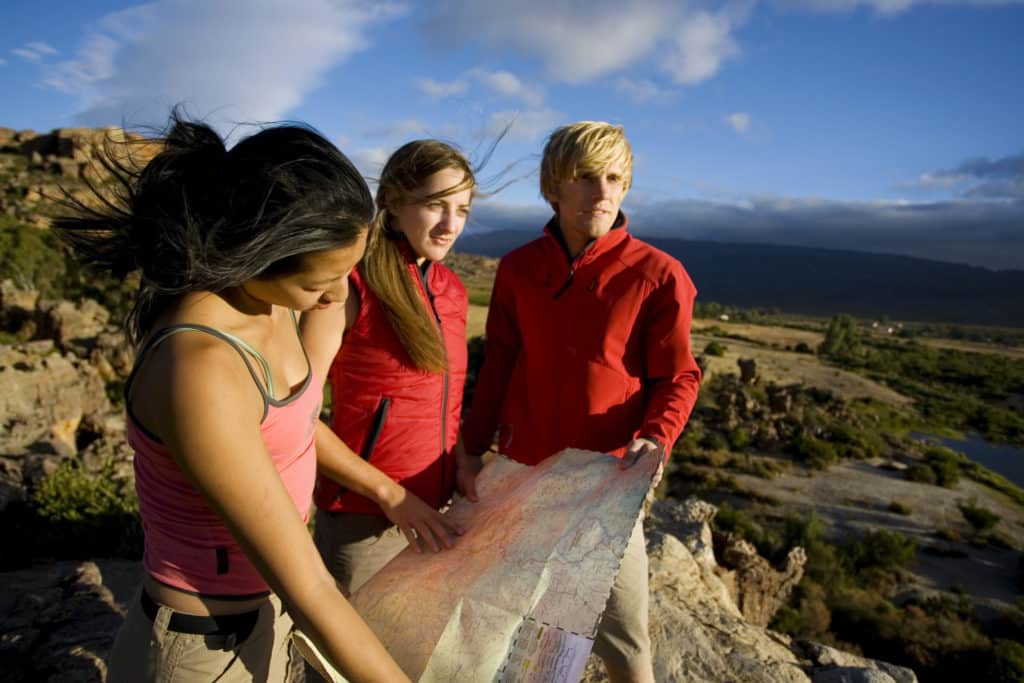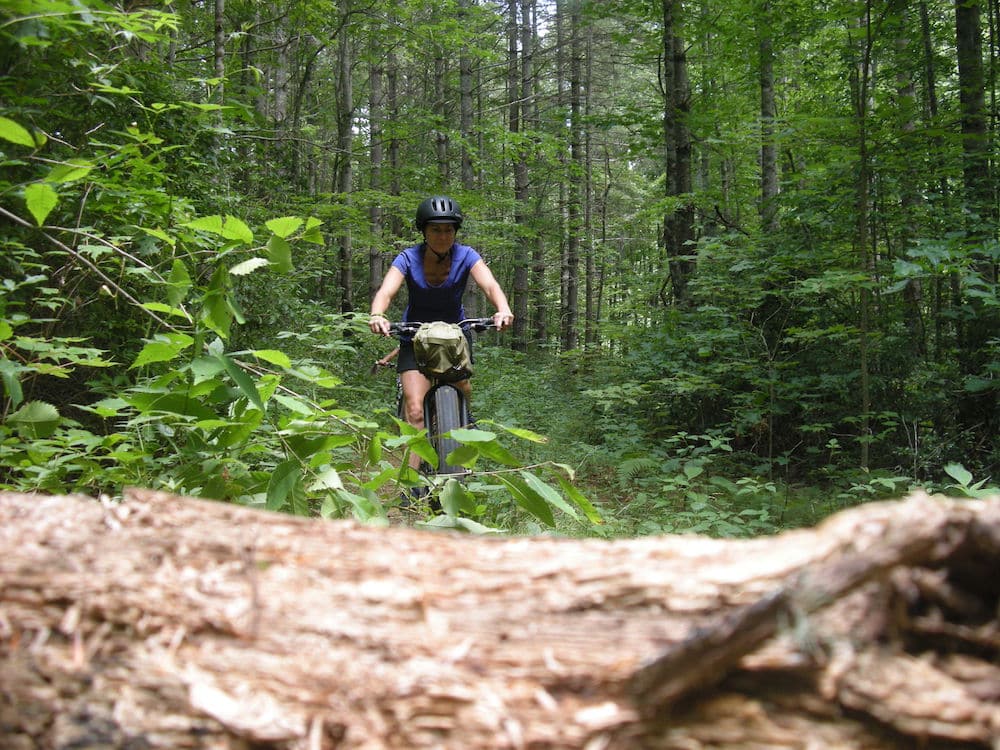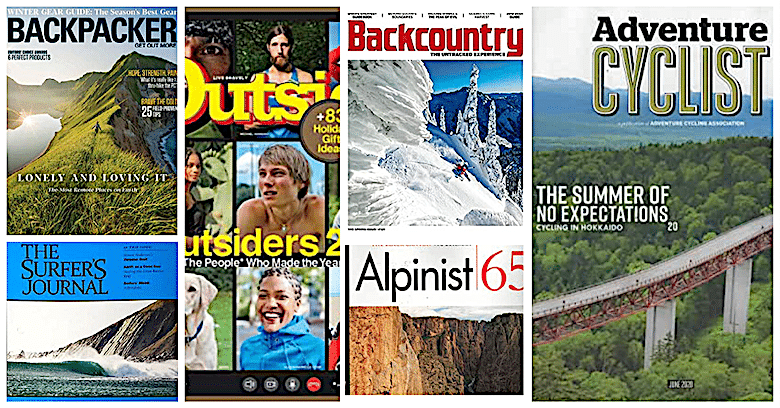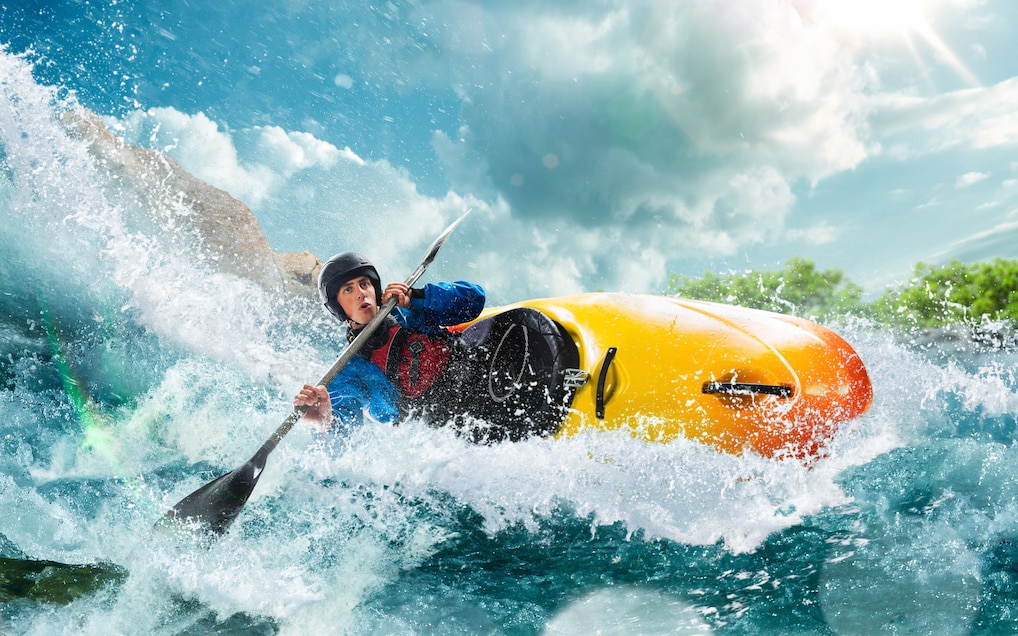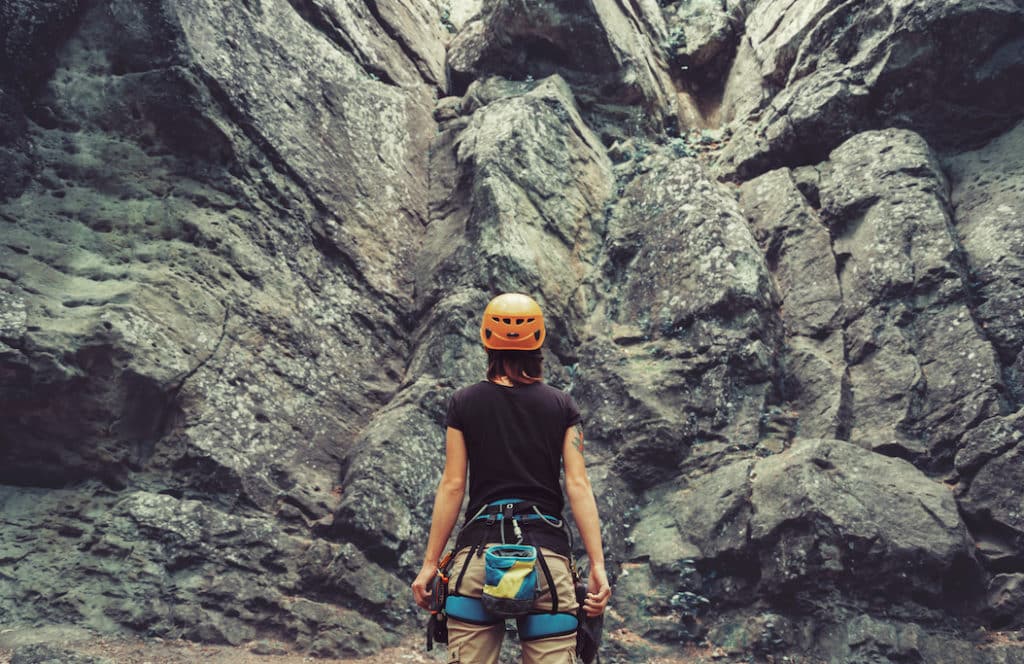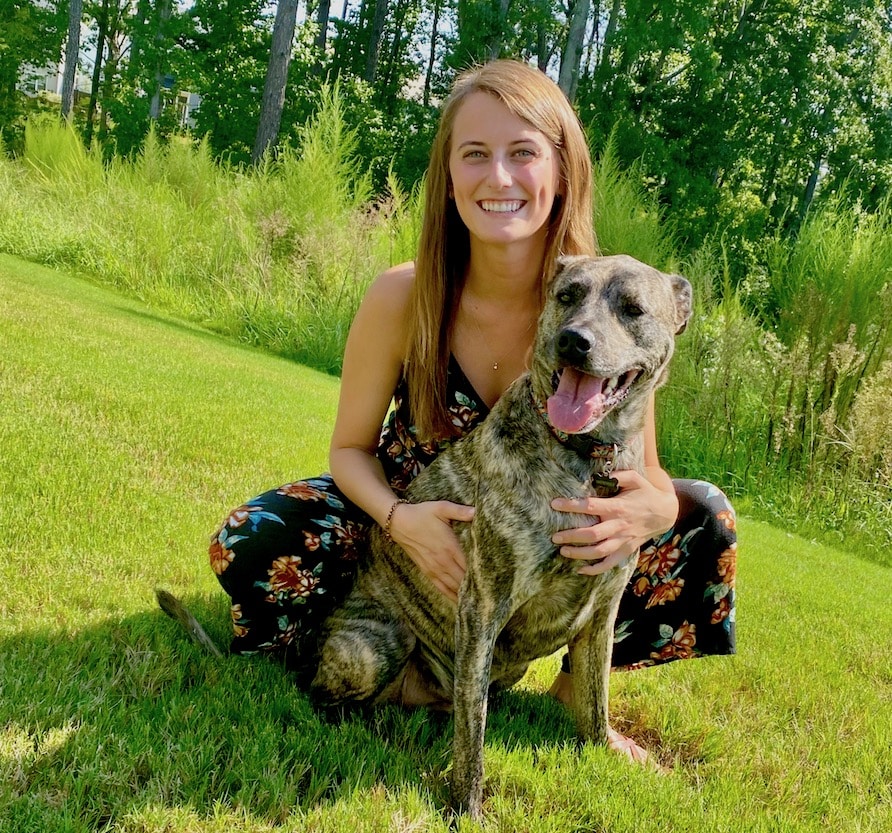NCOAE Blog
Signs That an Intensive EMT Training Course Might be Right for You
EMT TrainingIntensive is one of those words that, when you say it out loud or write it down, sounds foreboding or, as the word itself suggests, promotes a feeling of tenseness. However, when we talk about completing an intensive EMT training course here at The National Center for Outdoor & Adventure Education (NCOAE), the word is not meant to scare you off.
Instead, it’s intent is to communicate the level of dedication you’re capable of putting into such a program, given the brief timeframe allotted for the program. And by brief, consider this: You can complete a high school EMT program in about a year. A university college course typically takes about six months to complete, and a community college course normally takes a semester.
However, to complete an intensive EMT course, such as those offered here at NCOAE, the work can be completed in just 21 days. That’s three short weeks. Boom! Done! Let me take the National Registry of Emergency Medical Technicians (NREMT) exam!
Benefits of the Intensive Approach to EMT Training
Know this: With an intensive program, you’re going to learn everything you need to know to take and pass the NREMT exam, and you’re going to learn it quickly. Just be prepared to take in a lot of information in a short amount of time. Here are a few of the advantages of intensive learning: (more…)
Understanding the Role EpiPens Play in Urban and Wilderness Settings
Wilderness Medicine TrainingFor those who suffer severe allergic reactions to everything from wasp stings to wheat consumption, getting help — and getting that medical intervention fast — may mean the difference between life and death.
Here at The National Center for Outdoor & Adventure Education (NCOAE), we train our Emergency Medical Technician (EMT) students and Wilderness First Responder (WFR) students in the use of EpiPen, an autoinjector for those suffering a sudden anaphylaxis reaction.
This somewhat imposing emergency medicine tool is an injection device that contains epinephrine, a chemical that narrows blood vessels and opens airways in the lungs. A promptly administered injection may reverse severe low blood pressure, a rash or itchy skin, an alarming shortness of breath, hives, nausea, vomiting, and other symptoms of an allergic reaction.
Anaphylaxis is a life-threatening allergic reaction that requires immediate treatment, whether within the city limits or deep in the backcountry.
And while most anaphylaxis reactions are mild and self-limiting, it is impossible to predict — at least in the beginning — whether a reaction will become life-threatening. As a result, rapid intervention is always critical. A hiker’s risk for anaphylaxis increases if they suffer asthma that is severe or not controlled. Medical conditions such as heart disease can also increase the risk of an episode.
What can trigger an anaphylaxis episode?
The following are among of the most common causes of anaphylaxis:
- Milk, peanuts, tree nuts, eggs, shellfish, wheat, and soy
- Stings from bees, wasps, or fire ants
- Antibiotics, NSAIDs, or aspirin
- Latex
Adrenaline is the first line treatment for anaphylaxis and is most often administered using an autoinjector such as the EpiPen or drawn from a vial using a needle and syringe. EpiPen autoinjectors are available in two sizes — one for young children and another for those weighing more than 66 pounds. Since epinephrine is a prescription medication, anyone with a history of severe allergic reactions should have a prescription and the device at hand.
(more…)From Couch Potato to Hiker in Just 4 to 6 Weeks
InspirationApparently, I spent three quarters of last year and a quarter of this year mostly sitting on the couch. I held a beverage in one hand, chips, cheese and crackers in the other (and yes, I can hold that much).
Adding new meaning to the term “binge-watching,” I viewed dozens of subtitled, multi-season detective series from every nation in NATO — all of which I wouldn’t have sat through in the years leading up 2020. Sound familiar to you?
OK. Maybe your pandemic parade didn’t include as many snacks, and maybe you were watching adventure films while wearing your climbing harness on the couch, a rack of gear on the floor. That sound more likely?
But it’s possible that in either scenario, you never pulled back your window curtain to notice the outdoors is still there, just waiting for you to emerge. It’s time to get out from under the duvet, lose the pajama bottoms, and be outdoors more than you’ve been indoors and on your couch over the last 12 months or so.
You probably aren’t in as good of shape as you think
It’s also time to come to terms with reality. You’ve been marinating on a couch for more than a year now. If you were climbing 5.10 early last year, chances are you aren’t doing that now. The living room furniture has become a leech of progress and fitness.
The solution? Allow us to help you see how easy it is to get out of the house and onto the trail for a multi-day backpacking trip.
Most couch-to-5k programs are nine weeks long. However, the guide we put together below is only six weeks. And if you’re willing, you can probably knock that down to four weeks. Why? Because training can get boring. And if you get bored while training, you may never make it to the trail. We here at NCOAE want you on the trail.
So, what we’ve put together below is a guide. It’s not a program. It’s not a plan. Because if we can’t make it fun, you might just remain on the couch, reading subtitles and thinking you speak Swedish.
(more…)Thinking About Going to Med School? Start with EMT Training and Certification
EMT TrainingIf one of your goals is to apply to medical school and eventually become a doctor, here are a few of the hurdles you’ll need to jump through. First, you’ll need a four-year Bachelor of Science degree with a minimum 3.0 GPA, a passing score on the MCAT exam, and a few glowing letters of recommendation.
But how would you like to increase your odds of getting admitted and succeeding in med school? If so, you may also want to consider getting trained and certified as an emergency medical technician (EMT) and gaining some valuable experience in the field first.
According to a survey of 67 medical schools in the United States and Canada, 85 percent of those schools responded favorably to applicants with experience as EMTs or paramedics. That’s not exactly surprising. After all, EMTs have real-world experience in the medical field.
In this post, we highlight the advantages of obtaining EMT training and experience prior to applying for and enrolling in medical school.
Build Your Foundational Knowledge
EMT training helps to build your foundational knowledge in several medical disciplines, including the following: (more…)
Mother Nature Requests a Non-Disclosure Agreement on Secret Spots
WildernessYou’ve just finished packing up your gear and made sure that your favorite secret camping spot is in better shape than when you arrived. You’ve disposed of your waste properly and minimized your impact.
Suddenly, someone stumbles out of the tree line with a couple of sidekicks, tosses down a backpack and pulls a smartphone out of their cargo pants.
Two dozen photos and a short video later, all three cram their cell phone back in their shorts and excitedly speak how pristine the spot is. “This is great! And there’s hardly anybody here,” one of them says to another. “I can’t wait to post this stuff on Instagram and show everybody where we camped this weekend!”
With the advent of texting, tweets, drones with really good cameras, and phones that can take and post 12-megapixel photos and 4K video — along with their coordinates — it’s obviously past time to consider a nondisclosure agreement for Mother Nature’s treasured and off the beaten path locations.
The simple fact is wilderness (and the backcountry in particular) is taking a beating. And we all know what happens when Mother Nature isn’t happy.
Scientists Battle Location Giveaways on Social Media
Here’s a real-life example of why nature needs a nondisclosure agreement. I was guiding a research scientist on a trip to find an ancient bald cypress tree for his research. We spent hours paddling around to find the old tree, and when we did, the scientist wrote down the coordinates. He didn’t even share those coordinates with me in fear I might geotag a photo and post it online.
When I asked him to explain his clandestine actions, he told me that an enormous amount of damage has been done to ancient trees because coordinates have been posted along with pictures. He now refuses to geotag any of his posts.
And he has an excellent point. Close your eyes for a moment and picture that favorite spot that you found in your local woods, secret climbing crag, or untapped surf location. Now imagine dozens of billboards advertising those treasured spots, each boasting a million views and offering exact directions to each.
I can hear your screams from here. Can you hear mine? You would be angry on a volcanic level. (more…)
How to Become an EMT
EMT TrainingYou’re thinking about becoming an EMT. Awesome! If you follow through, you will be joining the ranks of today’s modern-day heroes, the frontline of the frontline workers — bona fide life savers!
Emergency Medical Technicians (EMTs) are trained professionals who provide care in critical and emergency situations. Such emergencies can range from simple, routine calls to intense and complex scenarios.
You may show up for a call only to discover that there is no victim, or the person is okay and refuses help, or a patient simply needs transportation from one medical facility to another. On the other hand, you could be called in to attend to the victim of a car accident or a shooting or a heart attack, drowning, mountaineering accident, or drug overdose. You may even have to deliver a baby! You can never predict what will happen over the course of any given shift.
As an EMT, your job responsibilities generally boil down to keeping patients alive using non-invasive medical procedures and transporting them safely to a hospital or clinic where they can receive a higher level of professional medical care. More specifically, you have three fundamental job responsibilities:
- Assessment and stabilization of the patient’s condition
- Basic life support
- Transportation
In this post, we bring you up to speed on the different levels in emergency medicine and credentialing while explaining the basic education and skills required to become an EMT.
(more…)Returning to School? We Want to Help you Safely Opt Out(side)
UncategorizedIn recent weeks, we’ve all been hearing more and more from parents, educators, and even the nation’s top disease experts on the impending opening of schools across the nation.
Dr. Anthony Fauci, who heads the National Institute of Allergy and Infectious Diseases, has suggested that school districts developing their plans for campus reopening should find ways to offer as many outdoor activities as possible. Fauci said that could include everything from outdoor classes, to recess, and lunchtime.
Plans for just when and how schools will reopen are being formulated and fine-tuned, and the consensus seems to be that being outside is the safest place to be during the instructional day. As states start to mandate returns to school, safety and quality of education are at the forefront of design.
Obviously, you’ll get no argument about that from those of us here at The National Center for Outdoor & Adventure Education (NCOAE). And we have some suggestions. But first, here are the questions we are hearing most often from you.
Why move outdoors?
Doctor Fauci already told us that spending time outdoors is safer during times of infectious diseases, and we’re puzzled why some schools forget that being outside is often best for our physical, emotional, and mental well-being. Studies have shown that, in districts with high numbers of second language students, learning outdoors is (more…)
Wilderness Courses in the New Year: Fresh Beginnings, Adventures, and Trails
About NCOAEMuch like most educational institutions this past year, we find ourselves looking down the road toward new beginnings. And for us here at The National Center for Outdoor & Adventure Education (NCOAE), that means new wilderness courses, upgraded emergency medicine education courses, and more wilderness medicine education programs. Long before 2020 faded into the rearview, we took a fresh and hard look at what we do, why we do it, and how we can do better by you — our students and client organizations.
As we emerge from the pandemic, we’ve designed courses that offer our participants more flexibility, greater breadth of instruction, and fresh course areas that will draw you deeper into the wild and yourself.
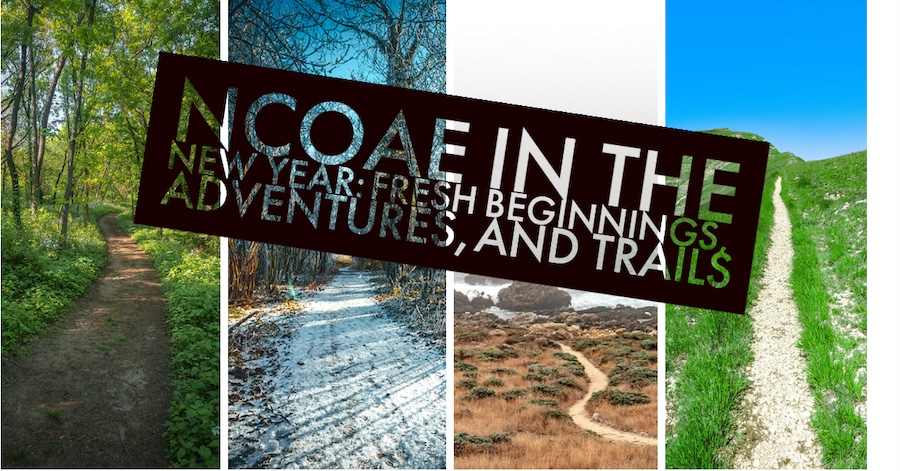
If your desire is to help yourself to adventure, here are a few of our offerings:
Emergency Medicine Education and Wilderness Medicine Education
We have worked hard to make Emergency Medicine Education and Wilderness Medicine Education easier to access and more flexible to participate in. Our hybrid medical courses enable you to start things off in your own home. That’s because one of the largest obstacles facing our students in the past was leaving home, quitting a job, or getting time off from work, and spending their savings on accommodations and food for extended periods of time. For some people, this trifecta of changes meant they had to abandon their dream of becoming part of the medical workforce.
Here at NCOAE, we design course that exceed industry standards, which means you will be a leader in knowledge and practice. Depth of instruction is not compromised by the hybrid format. In fact, our hybrid courses will prove to be a huge win for you, as studying from home only enhances the hands-on education that occurs once you’re on-site with us for the practical portion of your training.
(more…)Success is Just Getting Out There: Re-ignite Your Inner Beginner – Part 3
NCOAE RecommendsOn a recent early morning bike ride along some local wooded trails, I happen to stumble upon the greatest of beginners: a group of children playing with rocks, moss, and whatever “loose parts” they could lay their hands on. I smile and ride right past them, unwilling to break the spell.
But then I spot the father and we exchange “good mornings,” before I squeeze the brakes on my bike and come to a halt. I know this particular man and he just so happens to be a passionate member of the outdoor- and adventure-based experiential education community. And since I had been musing on how to approach this — the third installment of the NCOAE Re-ignite Your Inner Beginner series — bumping into this man on the bike trail was perfect!
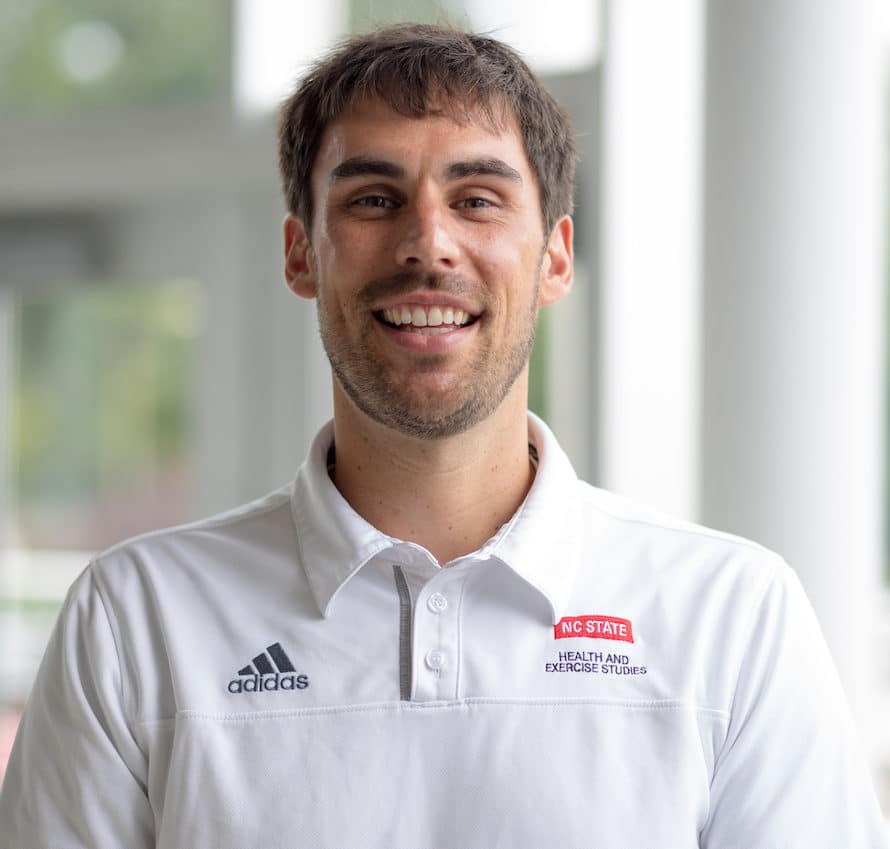
The father’s name is Scott Schneider, and he’s a well-known senior lecturer of Outdoor Leadership at North Carolina State University in Raleigh. He teaches courses in backpacking, rock climbing, mountaineering, basic canoeing, and challenge course programming, to name a few.
Scott is also a certified American Mountain Guide Association (AMGA) guide with a Single Pitch instructor (SPI) designation to his credit, a Leave No Trace (LNT) trainer, Wilderness First Responder (WFR), and an Association of Challenge Course Technology (ACCT) certified challenge course manager.
Grabbing up my phone and turning on the mic, I asked Scott a few questions about staying fresh, excited, and teachable in the field. Here’s what he had to say:
(more…)Running as Exploration? Re-ignite Your Inner Beginner — Part 2
NCOAE RecommendsFrancis Bacon, the Renaissance statesman and philosopher best known for his promotion of the scientific method, is credited with the expression, “Knowledge is power.” But to those of us who prefer to see a world bathed in fresh new adventures, knowledge can actually be a curse.
Here at The National Center for Outdoor & Adventure Education (NCOAE), we encourage our students to take an adventure first / educational always approach to discovering new experiences; to become beginners at something fresh. Attempting something new promotes a growth mindset. It reminds us to reflect on our education expertise and empathize with those we teach and lead on first-time adventures. And it keeps us from getting stale.
In this, the second installment of the benefits associated with discovering new human-powered outdoor challenges, we’d like to introduce Christine Fantini, who has toiled for years in our industry as a guide and outdoor educator. For a good chunk of her career, Christine was a sailing instructor in Massachusetts, eventually becoming director of sailing programs for the Town of Yarmouth. She helped create OWLS (Outdoors We Learn to Succeed) in Durham, N.C.’s public schools.
In addition, Christine is a certified Kripalu yoga instructor, bringing yoga to children in inner city schools, and she also taught bilingual classes within the Latino community. She has explored the wilderness by hiking, bouldering, climbing, biking, and paddling.
And now, after years of wandering around the woods, exploring off trail, “getting lost” on purpose, and once being lifted off her feet by 90 mph winds on a mountain trek, Christine is igniting her inner beginner by exploring a fresh, new pursuit. This North Carolina-based educator has taken up running as a new means of exploration.
Why running? We asked Christine to explain to us why she would abandon other human-powered outdoor pursuits in which she has had much success in order to run. Here’s what she said:
(more…)21-Day Intensive EMT-Basic Training Now Available in North Carolina
EMT TrainingStarting and completing EMT-Basic training in North Carolina doesn’t have to be a long, drawn-out exercise. It’s now possible — in just 21 days — to obtain the proper training and knowledge to take and then pass the National Registry and the North Carolina state EMT exam.
Editor’s Note: This course was previously a 19-day training but has since transitioned into a 21-day ‘intensive’ EMT certification course with a unique hybrid component as of 2021. Keep reading, and then visit the link at the end of this post for the latest info.
The following EMT Training video, which explains the ‘Intensive’ EMT-Basic Training program offered here at NCOAE, explains how we do it and why it’s so effective at helping people obtain their EMT credentials:
Classes meet virtually for 11 consecutive days, which include 131 hours of didactic, classroom training. Then, the class meets in person for 10 days, for an additional 61 hours of hands-on training, as well as 48 hours of clinical and (more…)
Outdoor Activities Getting Stale? Re-ignite Your Inner Beginner
NCOAE RecommendsThey say you never forget your first kiss. And while that’s very sweet and sometimes even true, the point I’m going to attempt to make is this:
If you’re an avid surfer, rock climber, or backcountry enthusiast, there are times when you look back on your first epic outdoor adventure. Sometimes it’s with a grin, and sometimes it’s with a grimace.
What we’re going to do in the next couple of posts in this new series here on the NCOAE blog is to ask you to consider rebooting your minds and think back to your initial foray into your favorite human-powered outdoor adventures.
Maybe you remember paddling into your first wave and just lying on the board until the person next to you leans over and says, “Hey, jump to your feet without thinking about it. It’s easy.” And so, you do — and you’re amazed how effortlessly it was. And it’s been 10 seconds and you’re still standing up, riding the foam, wondering where that sense of balance came from.
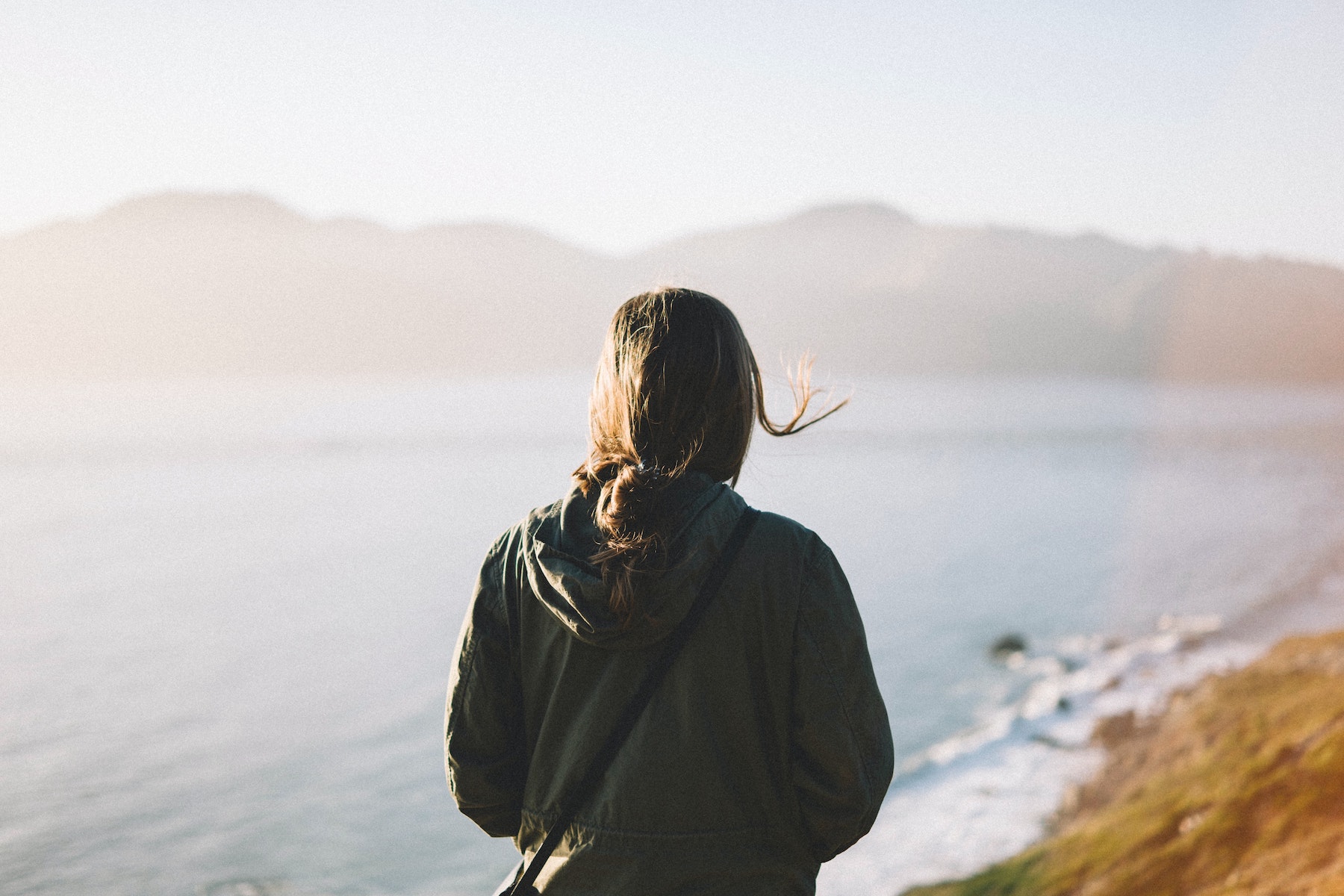
Same for the time you put on your climbing gear and successfully made your way up a challenging route. Or paddled your kayak straight toward a stretch of angry rapids.
Is it the adrenalin rush that got you hooked on your particular activity in the first place? Was it the ever-pleasant dopamine blast? More important, do you still get that feeling of excitement every time you participate in that activity or has it become routine?
If your answer is in the affirmative, head out and continue to do your thing. However, if the thrill is gone, or greatly reduced, keep reading.
(more…)Inspiration Through a Journey of Exploration — Part Three: Outdoor Magazines
WildlifeAs you’re probably already aware, outdoor magazines such as Bike, Surfer, Powder and Snowboarder have all shuttered their windows and shut down their presses. So now what? Where do you turn for some real human-powered and adventure-based outdoor and journalism? And by journalism, we’re not talking about tweets, posts, and pieces written in and curated by whatever advertising banner flies across a website or social media platform.
Print journalism — especially outdoor magazines — is supposed to show an investment in credibility. Its printed editions say, we care and we are serious about what we do. And how do you gain access to a quality outdoor journal? You pay for it, that’s how.
We have no problem spending money for independent music, artisan foods and craft beer, as well as the artists we really want to see. To obtain those experiences, we go buy the vinyl, we shop the local markets, we attend the art shows, and we actively support these ventures.
But today, the majority of our best journalists, photographers, editors, and artists are independent operators, some contributing to outdoor journals such as Adventure Cyclist Magazine, BikePacker Magazine (now part of Bikepacking.com), The Surfers Journal, and Adventure Journal. Unfortunately, these magazines could soon disappear if we don’t continue to support their work.
“Ah,” you say, “But I can view any of these journals on their websites and see what they are doing.” Yes and no.
Yes, you can see the work of these journals — and their journalists — online, and indeed, the quality of the photography is beautiful, and the writing is inspiring. With just a click of a mouse, you can get a fair representation of what a slick, colorful, hold-in-your-hand magazine can give you. But not quite.
Print magazines and journals are the best! They physically arrive on your doorstep and you devour them so fast you can’t wait for the next to arrive. And the next issue won’t arrive for another three months! So, you keep your back issues. Another plus, no need to plug in, boot up, log on, and go into a search box to find words to read and beautiful pictures to help you escape.
Three months between issues? Sometimes! Quality takes time.
We’re not saying online journalism is without merit. But, honestly, in a short time, online articles are shuffled off to Recent Posts archives, mistakes and typos are corrected and edited. But once a magazine or journal is printed and in your hands, it is (more…)
Inspiration Through a Journey of Exploration: Part Two – Federico Cabrera
InspirationFederico Cabrera is a dreamer. For years, he had dreams of becoming a National Geographic photographer. Taking photos in Africa was top of mind for 15 years as he toiled in foreign trade. But that nagging thought of grabbing up a camera and exploring the world finally prompted Federico to give up his successful career and follow the photo bug dream.
These days, Federico Cabrera is a Buenos Aires-based freelance photographer, traveling throughout South America on a bicycle and living in the countryside and, as we’d like to point out, making a difference in the world.
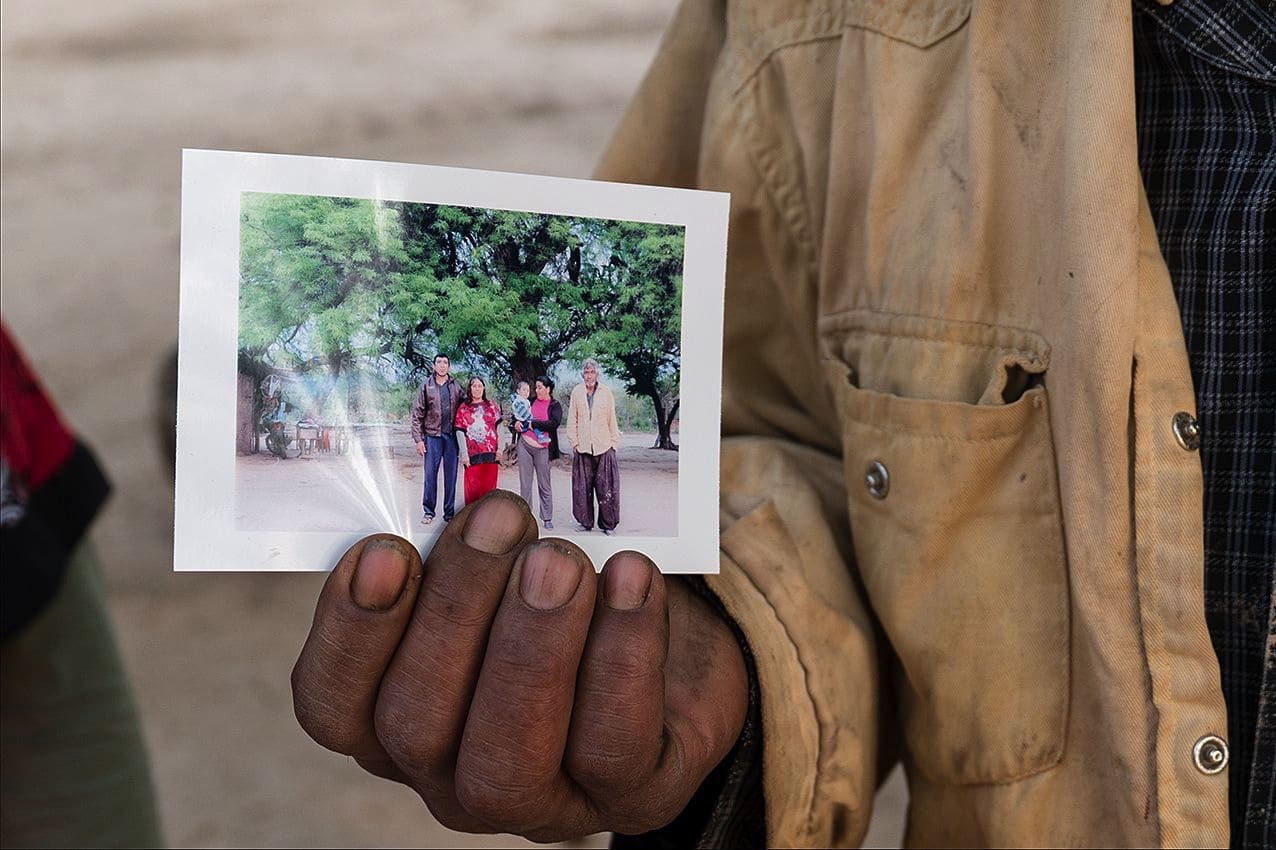
Walking away from his former career, Federico put new-found energy into a life behind the lens. And to do this, he said he began commuting country to country by bike, initially to reduce stress and eventually to return to a simple/healthier way of living. He now travels at a pace that enables him to actually see the countryside from the seat of a chain-driven bicycle rather than behind the wheel of a fast-moving, impersonal car.
Today, we feature the works of Federico in Part 2 of our Inspiration Through Exploration series. A photo is nothing more than light passing through a hole in a box. Whether exposed to paper treated with chemicals or digital receptors, the end product is the same — a photograph. And when you see a photograph that moves you, that is inevitably the result of the subject and the camera operator engaging in the movement of light together — a beautiful dance.
This week’s featured artist not only performs this dance with his subjects, but he produces beautiful portraits of them that he frames and then hands over to the subjects of his photography. His portraits are the residents of poor communities in South America, many living in homes with little or no access to electricity or clean water.
It was while visiting with these families that Federico discovered that in many of the homes, the residents didn’t even have a portrait of their family. That prompted him to carry a printer along with paper and ink to deliver personal portraits of his subjects.
On a more realistic level, Federico saw many families living with little or no electricity in their homes and worse yet, contamination in their water supplies. He decided he could make a small difference by handing out solar lamps and water filters to households he visited while on his expeditions. That, along with portraits of those families that were often the only photographs these South Americans had in their homes.
Federico figures he’s donated nearly 350 solar lamps and water filters, along with more than 500 printed portraits in the six years since he began these bikepacking adventures, which include expeditions through Argentina, Chile, Venezuela, Brazil, Peru, and Bolivia.
So when Federico packs up for a photo expedition, he brings along his essential photography equipment, as well as solar lights and water filters that he personally delivers to those who need them.
A photographer? Yes, but Federico is much more, not only capturing the light to make a family portrait, but a light that is filled with empathy, compassion and a heart.
We asked Federico what inspires him and how he arrives at his inspiration:
(more…)Inspiration Through a Journey of Exploration: Part One – Alex Hotchin
InspirationThis week we begin the first in a three-part series called “Inspiration Through Exploration” where we will see how gifted and novice travelers alike can document their adventures through artwork, photography, writings and other means.
Today’s inspiration comes from Australian Alex Hotchin and her beautiful — and very unique maps. Next week, we will explore the photography of Federico Cabrera in his “Their Only Portrait Project.” And in Part Three, we will see how primitive and print journals are emerging, with representation from both the Adventure Journal and Bikepacking Journal.
What we here at the National Center of Outdoor & Adventure Education (NCOAE) hope to accomplish in this series is to inspire outdoor enthusiasts to document their adventures in new and fascinating ways. Too often we just pick up our smartphone or camera to grab a quick shot of a passing bird, a mountain formation, or the cool gear of the hiker in front of us.
We are hoping to encourage you to move outside the boxes (devices, phones, computers) that are typical of modern-day sharing. For example, I carry a camera on my bicycle, usually strapped to my climbing harness or in my boats. Ninety-nine percent of the time I don’t touch it. So, why carry it at all? Because maybe one percent of the time, I see something that I want to help illustrate the story and memory of that specific moment in time, during that specific journey. I like to take pictures of the unexpected.
Most of the time, I also carry a roll of colored pencils and a notebook. Drawing takes more time, so it forces me to stop and think about how to best combine lines and colors to represent something meaningful to me and to connect my story with those who might see it later on.
Many times upon returning from a long outing or expedition for NCOAE, I show my family and friends my journal, drawings, and photos to accompany my stories. This gives people the opportunity to come up with questions, engage with the landscape and not just ask, “How was your trip? “What did you do?” Sharing on a personal level allows for a secondary depth of exploration, face to face (or six feet apart for now).
Meet Alex Hotchin
Alex is an illustrator who creates books and maps to tell her stories. Her illustrations are inspiring and the maps she creates are personal to herself and to her specific journeys.
When looking at Alex’s work, you get the sense you have actually joined the journey. Alex takes two-dimensional representations of maps and makes them jump off the page. Scale is not specific to cartography, with the scale offering viewers a look through the artist/adventurer’s eyes. What she saw out there — the beauty, the obstacles and cultural significance — is laid out before us in lines, shapes and colors.
Can you actually find your way using her maps? I suppose that depends on where you want to go. We asked Alex to provide us with a little detail about the work she does, and here’s what she had to say:
(more…)Paddling Terminology and Slang: Nobody Says ‘Up a River Without an Oar’
Outdoor LingoWelcome to our third — and final segment in our series about sports terminology and slang terms. In this post, we’ll be talking about whitewater paddling, and right off the bat, we’ve got a warning for the novice paddler.
Those who might be unfamiliar with whitewater kayaking or canoeing might think rowing and paddling are the same thing. But those folks would have another think coming. Because nothing raises the hackles of a whitewater guide or enthusiast than hearing a newbie describe canoe and kayak propulsion as “rowing.” Strike One!
The only thing worse would be referring to a paddle as an oar. Paddles are used for paddling. Oars are used for rowing. Strike Two!
We apologize for the harsh tone, but we are professional educators and guides here at The National Center for Outdoor & Adventure Education (NCOAE), and our primary purpose today is to support you in your efforts to make yourself a more confident person when you emerge from the river. That means that, during the course of a conversation, if you were to say you were rowing a river and got your playboat stuck in a ‘sticky hole,” you would need to take a “wet exit” from the conversation without the opportunity for a “brace” or a “combat roll.” Fact!
So, let’s pack our dry bags, pull on our skirts and PFD’s and hit the river.
We’ll start with the name of the vehicle in which we will be paddling. Your first thought might be to call it a kayak. Don’t. Yes, in every design aspect and shape it’s a kayak. But when you talk about your kayak, you will be saying “boat.” No, really. We insist. And we understand you might be confused but trust the process.
Here are some terms you’ll need to know about the boat (kayak) and it is various and sundry accessories:
(more…)On Belay — Climbing Terminology and Slang
Outdoor LingoDid you hear the one about Rock and Ice magazine merging with Climbing magazine? It’s not a joke. That news was announced just today (Oct. 9, 2020), and it conveniently coincides with the next post in our series on outdoor industry lingo. With the assistance of The National Center for Outdoor & Adventure Education’s (NCOAE) outdoor lexicon support team (that’s me), most of you were able to make it through the first post in our outdoor industry lingo series — Surfing. And now, just when you thought it was safe to go back to regular English, you get to learn an entirely new language.
For today’s writeup, we’ve got you “on belay” with all the “beta” to get you through the “crux” of the lingo learning curve so you can “on site” any climbing conversation.
Holy crevasse! Why are all those terms in quotation marks? And what do they mean?
Pay attention, Grasshopper. While I can’t (won’t) give you the entire exhaustive list of climbing terms, I am going to go deeper into the nifty nomenclature of climbing. And the first thing you’re going to need to access in order to summit this speech peak, is the climber’s “bible.”
This 60-year-old book is called “Mountaineering: Freedom of the Hills,” and it’s available now in its 9th edition. So, if you want to climb or become a mountaineer, or if you just want to speak intelligently about the topic at climbers gathers or Zooms, get the book. Why? Look around you. Even the most ardent climbers, guides, and outdoor education professionals reference Freedom of the Hills.
So, let’s “tie in” and get you on the “sharp end” by the end of this post. We need to get you talking knowledgably about climbing.
I’m thinking we should start things off with how climbs are rated — the difficulty level. You might hear someone talk about climbing a 5.9 with a 5.12 pitch at the crux. And you don’t have a clue as to what that means. Bottom line? We’re referring to the “Yosemite Decimal System” (YDS).
The Yosemite system is a common and dynamic language. And like ardent surfers talking about big waves, nobody wants to claim they are climbing harder routes than they really are. It’s just too easy to prove that you’re exaggerating. So, is this YDS accurate? If you climb — or attempt to climb — you may come up with the answer yourself.
(more…)Surfing Terminology and Slang: You Can’t Play BINGO Without the Lingo
Outdoor LingoSeems most every human-powered outdoor recreation activity has a language of its own. And the more popular that activity becomes, the more expansive the list of slang words and new terminology become. It’s a way of communicating efficiently with your fellow enthusiasts, and let’s face it, speaking the language makes your part of the group.
In this next series of posts here on the NCOAE Blog, we’re going to explore the unique spoken word of our beloved adventure-based sports. We’ll start off with surfing, the “Sport of Kings,” this week, then move on to climbing and paddling in future posts.
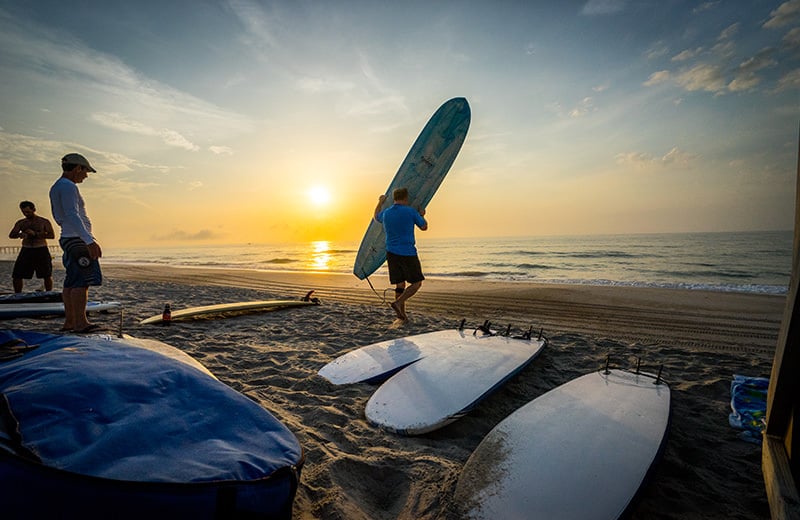
And now, without further ado, let’s go ahead and push through the shorebreak, paddle out to the lineup and grab us up some gnarly waves.
Sorry. One more aside before we begin. Let’s go ahead and elaborate on that “Sport of Kings” comment above:
Back when missionaries arrived on the Hawaiian Islands, they quickly banished the sport of surfing, calling it hedonistic and probably too much fun. They also gifted the Hawaiian population with a variety of diseases, but that’s another story. However, when King Kalakaua was installed on the throne in 1872, one of his first acts was to reinstate this ocean-specific human-powered activity that was so loved by his royal predecessors. And once again, surfing became the “sport of kings” and commoners alike.
Since then, surfing has become among the most romanticized sports in the world. Films like The Endless Summer, Point Break, Elvis Presley’s Blue Hawaii and even the Gidget television series drew thousands of young people into the ocean and onto waves across the coastlines of America — and around the world. And most recently, as you’ll see in the video below, Maya Gabeira — a Brazilian surfer who makes it her mission to tackle big, big waves — recently broke the Guinness World Record for the Largest Wave conquered by of woman!
Again, sorry. One final diversion and then we’ll get to those surfing terms:
Lee Clow, the advertising icon who worked directly with Steve Jobs on classic Apple television ads and futuristic consumer trends, brought the culture of local surf shops into Apple’s megastores around the world. Instant success. This California ad genius — himself a veteran wave rider — knew all about the bond between a surfer and a surf shop.
For instance, he knew that surfers find any reason at all to visit a surf shop. Even when they’re broke. It’s where they hang out, hear about the trends in surfboard design, get the insider track on new surf spots or what’s breaking. You feel part of a family, and you speak the same lingo. Yep, Apple took Lee Clow’s sales pitch to heart and the rest is history.
No more asides. No more fun facts. Let’s talk surfing terminology:
(more…)Meet the Staff: Kassie Kehrer, NCOAE Executive Assistant
Staff ProfilesKassie Kehrer is our new executive assistant, tasked with ensuring the efficiency of our Wilmington, N.C., office here at The National Center for Outdoor & Adventure Education (NCOAE). In addition, Kassie is responsible for enrolling students in our many medical trainings, outdoor education courses, and backcountry trips. She’s also the go-to person when it comes to customer service and support, collecting enrollment paperwork, and making sure things are running smoothly for students and staff members alike.
Born in Schenectady, N.Y., and raised in Washington State, Kassie attended Western Washington University in Bellingham, Wash., where she majored in recreation with a concentration in Recreational Therapy & Child Life Services.
Prior to joining us at NCOAE, Kassie spent the past six years working for the YMCA of the Triangle in Raleigh, N.C., with four of those years in the position of director of Camp Rising Sun. She said the job gave her the opportunity to coach and hire staff and build an inclusive environment for kids of all abilities.
Prior to that, Kassie worked in a variety of roles, ranging from counselor to kayak instructor, at places like Camp Wingate Kirkland in Yarmouthport, Mass.; Brookline Parks and Recreation in Brookline, Mass.; Camp Indianola in Indianola, Wash.; and Camp Greenville in Cleveland, S.C.
In college, Kassie was a recreational therapist and Child Life intern at Shriner’s Hospital for Children in Boston. She then went on to work as a program coordinator at the Henderson School for Inclusion in Dorchester, Mass., and served as a behavioral therapist at The May Institute in Boston.
We asked Kassie to tell us a little bit about herself, and here is what she had to say: (more…)
DIY Part 3: Brewing Coffee in the Backcountry Like a Barista
Backcountry PrepWhat’s the only item in your gear closet that could possibly be more important than food, water, and shelter? For most of us the answer to that question is coffee! That complex nectar of the gods that makes us sharp in the morning and warm at night. And as the old saying goes, “Everyone should believe in something. I believe I will have another cup of coffee!”
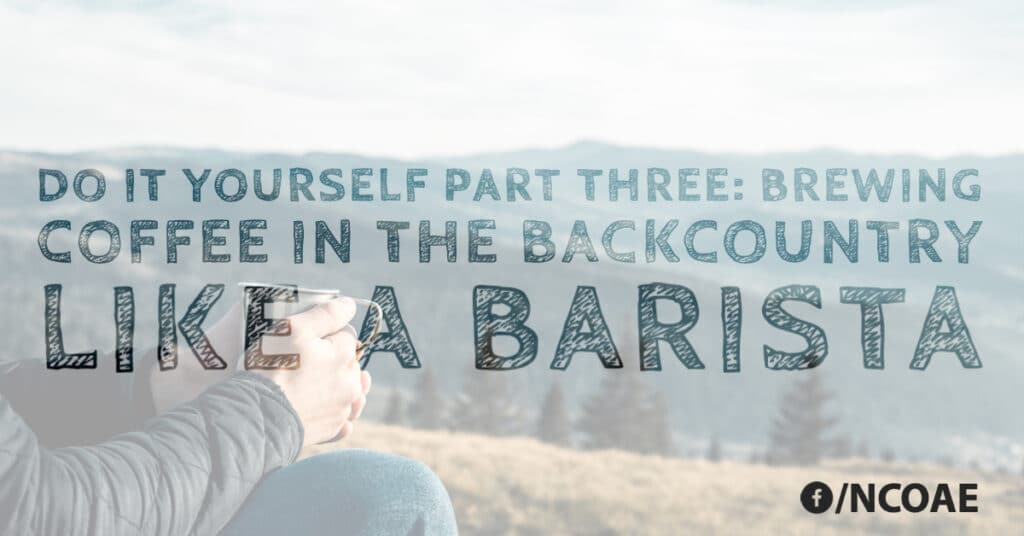
And, since brewing coffee is as much of a ritual as it is a necessity, you can imagine the amount of gear you’d need to stuff in your backpack in order to prepare the perfect cup of coffee in the wilderness. The question becomes, how do we get that great cup of coffee — using the best beans and blends we can find — without breaking the bank and our backs in the process?
In this, the third and final installment of Do-It-Yourself camping tips, we address the coffee snob within most of us, and share some interesting coffee-related quotes along the way.
Now make a face and say, “Instant coffee? Are you kidding me right now?”
COFFEE QUOTE NO. 1: “What goes best with a cup of coffee? Another cup.
Henry Rollins
So let’s get to it. We’ll teach you how to pack and prepare the best cup of coffee possible in the backcountry. And you’ll be able to perform this feat in five to seven minutes.
Heres’ what you’ll need:
(more…)TALK TO US
Have any further questions about our courses, what you’ll learn, or what else to expect? Contact us, we’re here to help!
